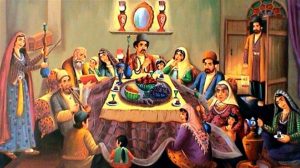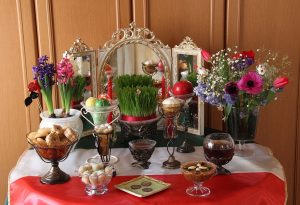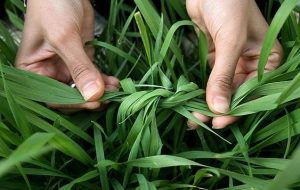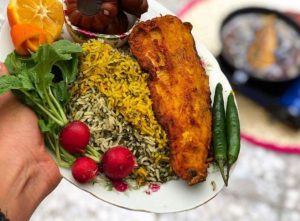One of the most famous celebrations of ancient Iran is Nowruz, which the people of Iran celebrate with the start of the New Year and congratulate each other on this Eid. Nowruz is one of the celebrations of ancient Iran that, even after all these years, is still celebrated with great splendor every year.
Nowruz is associated with the beginning of the new year, and people celebrate by following different customs and congratulating each other for the coming year.
Join Iran tourism to look closer at the Nowruz celebration in Iran and Persian New Year traditions.
The Roots of Persian New Year Traditions
Nowruz is a Middle Persian word with roots in the Avestan language (also known as Zend).
Nowruz celebration in Iran marks the beginning of the new year and the spring equinox (equal length of day and night). Anciently, Nowruz was called “Nava Sarda,” which means New Year. Nowruz was known as “Nosard” and “Nosarji” during the Achaemenid period.
History of Nowruz Celebration in Iran
According to existing legends, Nowruz is a celebration that originated during the reign of Jamshid, the fourth king of Iran before Islam. One of the oldest books of ancient Iran, Avesta, mentions Jamshid, who had the divine light. As ordered by Ahura Mazda, Jamshid confronts the devil; Since the devil had caused a lot of damage during that time, such as famine and drought. After Jamshid defeats the devil, joy and blessings return to Iran, and the lack is over. The ancient people later named this day “Nowruz,” meaning “New Day,” and immortalized it by planting barley.

Abolghasem Ferdowsi (Persian poet), Abu Rihan Biruni (Iranian scholar), and Tabari (Historian) also consider Jamshid the main founder of Nowruz. In Shahnameh (Poem by Ferdowsi), Jamshid ordered a throne and crown to be prepared for him on his way to Azerbaijan. With the sun shining on this crown, the world becomes all over the light. It is because of the joy of the people that Nowruz is created.
Nowruz was also celebrated during the Parthian and Sassanid periods. During the Sassanid period, Nowruz lasted at least six days and was divided into two periods: small Nowruz and large Nowruz. Another name for small Nowruz was public Nowruz, and it lasted for five days, from the 1st to the 5th of Farvardin. The sixth day, known as June Days, was called Great Nowruz or Special Nowruz.
What is the Nowruz Celebration in Iran?
In solar history, the first day of Farvardin is called the beginning of Nowruz. Nowruz begins with the sun passing through the earth’s equator and moving to the sky’s north. This starting moment is called the first moment of Aries. In the solar Hijri calendar, Nowruz is equated with “Hormoz Day” or “Ormazd” day in the month of Farvardin.
The Common Customs of Persian New Year
Khāne-takānī
Three weeks before Nowruz every year, the traditional act of Khane Tekani (literally meaning shaking the house) occurs. The Persians clean every corner of the house during spring cleaning. It’s no big deal to clean the house, as we all know. It’s actually for the sake of having a completely fresh start. The Iranians start the New Year by cleaning and organizing their homes and clearing their minds. Before Nowruz, people also buy new clothes.
Spreading Haft-sin (7 “S”)

Iranian families spread the Haft-sin a few hours before New Year’s delivery, and by placing the Haft-sin on top of that, they put apples, Vinegar, Coins, Samanu, greens, Sumac, and Garlic, as well as the Quran, fish, mirror, Lavender, congratulations to each other on this day. On the Haft-sin, each of these symbols has its meaning.
Greetings on Nowruz
The act of Eyd didani (greeting) is one of the main traditions of Nowruz, which defines the way of life of Iranians. Eid didani (visiting relatives) occurs mainly during the holiday season. Families invite other families to their homes. They welcome the guests with sweets, nuts, and seasonal drinks.
Giving Gift or Eydi
Older people usually give money or gifts to younger people during the Nowruz celebration in Iran and Persian New Year traditions as “Eydi.” Of course, in the ancient history of Iran, sometimes the younger ones also celebrated Eid with the older ones.
Sizdeh Bedar or Nature’s Day in Nowruz celebration in Iran

There are different opinions about the philosophy of Sizdeh Bedar. On the 13th of Farvardin Month, the people of Iran leave their homes and go to nature to get rid of impurities. The famous tradition of Sizdeh Bedar is “knotting green.” The philosophy of this work is to tie life with nature, and by doing so, people wish themselves freshness.
Nowruz Travel to Iran
In Iran, Nowruz and several days before and after it are official holidays, and many Iranians travel for a few days during this holiday. According to some statistics, the volume of Nowruz trips is growing.
Nowruz trips are divided into three waves. The first wave lasts from the last days of March every year until April 25 (the first day of the reopening of government offices), and the second wave from this date to the weekend. The third wave of trips also lasts until the school Nowruz holiday.
Nowruz Special Foods
Nowruz includes a variety of food specialties prepared by various countries of origin, just like other cultural celebrations. During the first day of Nowruz, a noodle soup called Ash reshteh is typically served. The knots of noodles symbolize the many possibilities one has in one’s life, and untangling them is believed to bring good fortune.

Another Nowruz dish is Sabzi Polo Mahi (fish served with special rice and herbs). Rice is combined with several green herbs and spices to create Sabzi Polo, which represents the greenness of nature.
During Nowruz, sweets are also served. A traditional menu includes rice bread or Nane Berenji, rosewater baklava, samanu (sprouted wheat pudding), and sugar-coated almonds called noghl.
What day is the Nowruz celebration in Iran?
In solar history, the first day of Farvardin (first month) is called the beginning of Nowruz. Nowruz is an official holiday in Tajikistan, Russia, Turkmenistan, India, Pakistan, Kyrgyzstan, Syria, Iraq, Georgia, the Republic of Azerbaijan, Albania, China, and Uzbekistan, and people celebrate. This day in Iran and Afghanistan promises a new year.
What does the Nowruz celebration in Iran mean?
In today’s language, the day when the new year begins is the day of the vernal equinox (equality of night and day).
What are the customs and traditions of Persian New Year traditions?
The ancient holiday of Nowruz has rituals and customs such as moving house, visiting, colored eggs, vegetable pilaf with fish, Haftsin, etc.
Which days of Nowruz are official holidays?
The first four days of Farvardin, the 12th and 13th of Farvardin, are considered the official holidays of Nowruz.
How to Say Happy New Year in Farsi?
Happy Nowruz in Farsi: Nowruz Mobarak- Sal-e Now Mobarak!




No comment